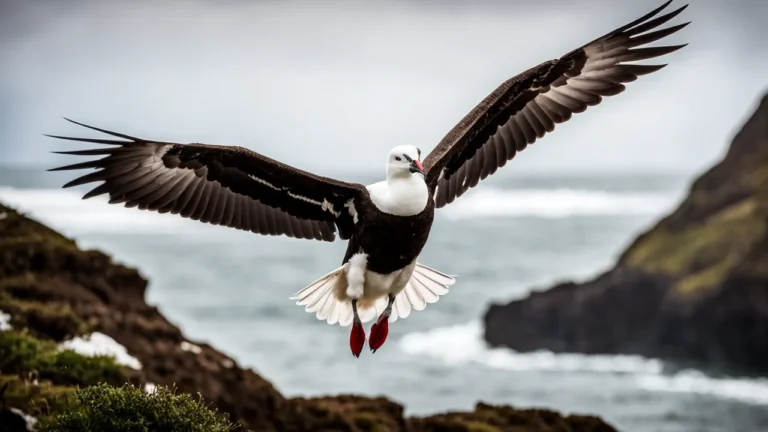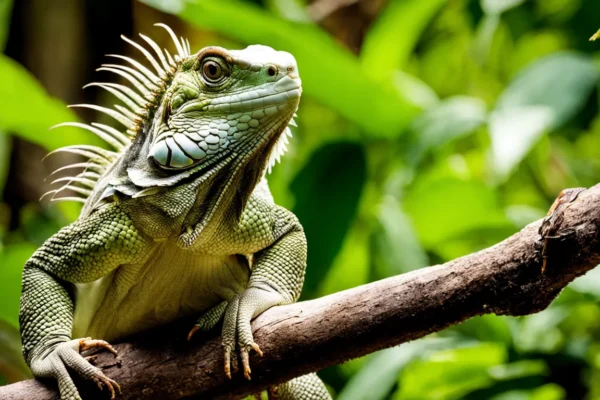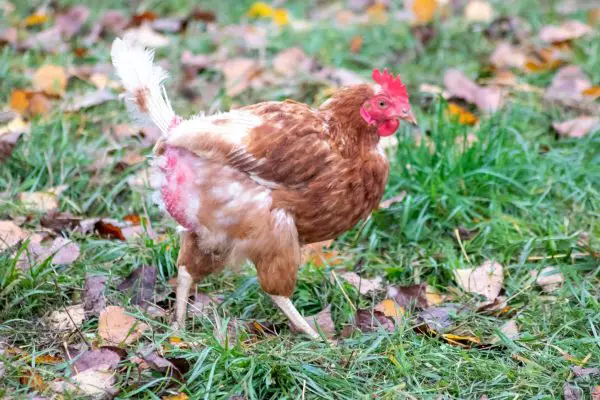There are many varieties of birds, ranging in size from small hummingbirds to massive condors. Which bird species, however, has the largest wings in terms of sheer span? In a nutshell, the longest wingspan ever recorded belongs to the wandering albatross, which can spread its wings an amazing 11–12 feet wide.
To help them survive, many birds do, nevertheless, have very enormous wingspans. This article will highlight the birds that have the largest wingspans, look at how they utilize their enormous wings, and investigate the reasons for the evolution of certain species’ enormous appendages and others’ modest wings.
Bird Anatomy: Measuring Wingspan
When talking about the biggest wingspans seen in birds, it is important to understand how wingspan is measured. The distance between a bird’s extended wing tips is known as its wingspan. It’s a crucial measurement that establishes the bird’s capacity to glide, soar, and fly great distances.
Body length versus wingspan
It’s crucial to understand that a bird’s wingspan is not exactly proportionate to its body length. This implies that a bird’s wingspan may not always correspond to its body length.
A bird’s wingspan is determined by a number of characteristics, such as its general body composition, flying style, and requirement for maneuverability.
An example of a bird with a relatively small body in relation to its wingspan is the albatross, which is recognized for having one of the greatest wingspans among all birds. This enables it to glide over great distances in pursuit of food with ease.
From one wingtip to the next, measuring
Ornithologists usually measure a bird’s wingspan from wingtip to wingtip. To do this, spread out one wing to its greatest length and measure the distance between the tips of the two wings.
The best depiction of the bird’s wingspan is obtained when the wings are completely extended, which is how the measurement is made.
It is important to remember that a bird’s wingspan might change based on whether it is flying or not. A bird’s wingspan may increase dramatically when it is flying because it expands its wings to create lift and help it move through the atmosphere.
Customs pertaining to ornithological documentation
There are established processes to guarantee precision and uniformity when creating ornithological records for wingspan. Several individuals of the same species are measured in order to account for variances, and the average wingspan is used as the representative measurement.
Reputable institutions like the Cornell Lab of Ornithology and the National Audubon Society often keep ornithological records. These organizations maintain databases with extensive details on many bird species, including their wingspans and other crucial traits.
Largest Wingspans: 11–12 feet for Wandering Albatrosses
With a staggering wingspan of 11–12 feet, the Wandering Albatross is the bird with the greatest wingspan in the world. These amazing birds are renowned for their amazing capacity to fly over the open ocean for hours at a time, traversing great distances with ease.
Few other birds can match their enormous wingspans, which allow them to take advantage of air currents and thermals to fly aloft for prolonged periods of time.
10.5 feet is the Andean Condor.
With a wingspan of around 10.5 feet, the Andean Condor trails the Wandering Albatross closely. These magnificent birds, which may be found in South America’s high highlands, are renowned for their amazing flying ability.
They can fly across the Andes with ease because of their enormous wings, using thermal updrafts to maintain their height and save energy. The breadth of the Andean Condor’s wings bears witness to its mastery of the untamed landscape in which it lives.
Royal Albatross of the South: 9.5–10.8 feet
One additional bird having a wingspan of up to 10.8 feet is the Southern Royal Albatross. This species, which is unique to the Southern Ocean, is renowned for its enormous size and elegant flying. Southern Royal Albatrosses are migratory birds that can fly great distances in pursuit of food. They may sometimes traverse hundreds of kilometers in a single day because of their large, thin wings.
Due to their enormous wingspan, these birds have evolved to live at sea and use it to their advantage while searching for food.
11.5-foot Dalmatian Pelican
Many people are surprised by the magnificent 11.5-foot wingspan of the Dalmatian Pelican. These big aquatic birds live in marshes and lakes across portions of Europe and Asia. Dalmatian Pelicans are well adapted to their aquatic existence because of their large wings, which allow them to glide over the water’s surface with ease as they hunt for fish.
Their capacity to travel and flourish in their aquatic environments is shown by the length of their wings.
Ten feet tall Great White Pelican
Another bird with a remarkable wingspan is the Great White Pelican, which is almost ten feet long. These amazing birds live in both freshwater and saltwater habitats and may be found in many regions of Africa, Europe, and Asia.
Great White Pelicans are excellent hunters because of their large wings, which allow them to fly through the sky and glide over bodies of water. They are formidable creatures in their various ecosystems because of their enormous wingspan, which is essential to their ability to travel great distances in search of food.
These birds, whose wingspans shatter records, are a living example of how adaptable and successful nature can be in a variety of settings. Their wingspans are essential to their survival tactics because they allow them to travel great distances, locate food, and negotiate difficult terrain in addition to enabling them to fly.
It is genuinely amazing to see these birds fly, and it serves as a reminder of the astounding variety and beauty of the bird kingdom.
Why Did Huge Wingspans Develop?
Large wingspans are an interesting feature that birds have evolved to have, enabling certain species to excel in flight. These remarkable wingspans have developed for a variety of causes, each with a specific function in the world of birds.
Soaring in the air
To enable soaring flight, one of the main reasons broad wingspans have developed. Thermal updrafts and wind currents are essential for allowing soaring birds, like vultures and eagles, to remain up high for prolonged periods of time.
These birds can easily capture these air currents with their large wings, allowing them to glide for hours without flapping them. Their ability to use these air currents more effectively and to travel great distances in pursuit of food and a suitable home depends on the size of their wingspan.
Soaring overseas
Seabirds that spend a large amount of their life flying overseas benefit greatly from having large wingspans. For example, certain albatrosses may reach a length of over 11 feet, making them the birds with the longest wingspan of all.
These amazing birds travel hundreds of kilometers in quest of food, gliding over the vast ocean with ease because of their large wings. Their large wingspan enables them to remain in the air for extended periods of time, which minimizes the need for regular flapping and saves energy throughout their strenuous travels.
Cycling in the heat
Another explanation for the evolution of big wingspans in certain bird species is thermal riding. Warm air columns known as thermals arise from the Earth’s surface as a result of surface heating. Hawks and falcons, among other birds, use these thermals to their advantage by circling inside them to gain altitude with little effort.
Having a wider wingspan helps these birds remain in the air longer and search the ground below for possible food by giving them more lift and dexterity in the thermals.
Gently fluttering
Some bird species with large wingspans can also fly slowly, which is advantageous for foraging or hunting under some conditions. Herons and egrets, for instance, may soar elegantly and gently over wetlands and other bodies of water because of their large wings.
They can hover above the water and execute accurate dives to capture fish or other aquatic prey because of their sluggish flapping flight. Through stability and control throughout these movements, the broad wingspan ensures effective hunting possibilities.
Birds’ development of broad wingspans is an amazing illustration of how different species have adapted to their unique habitats. Thanks to these modifications, birds are now able to dominate the sky, taking advantage of techniques like thermal riding, gliding overseas, soaring flight, and slow flapping.
We can better appreciate the amazing talents of our bird companions if we comprehend the causes of their remarkable wingspans.
Difficulties Associated with Wide Wingspans
Large-winged birds have various special difficulties because of their remarkable size. These difficulties have an impact on many areas of their existence, including takeoff, landing, feeding, and even the growth of their progeny.
Launch and landing
A major problem for avian species with broad wingspan is landing and taking off. It may be more difficult for them to get enough lift to take off or land safely due to the sheer size and weight of their wings.
Larger wingspans mean that larger runways or open areas are often needed for effective takeoff and landing. This may restrict their options for habitat and increase their susceptibility to habitat decline.
Feeding issues
When it comes to eating, a bird’s wingspan size might sometimes provide difficulties. A considerable quantity of food is needed by birds with big wingspans to maintain their size and energy needs. They may have to go far in order to locate adequate food, which can be difficult in places with little resources.
Additionally, wider wingspans may make navigating and capturing prey more challenging, thus hunting or trapping prey may take more energy and agility.
Fetal growth
The difficulties posed by their size start for large-winged birds even before they hatch. In bird embryos, the development of wide wingspans takes a significant amount of energy and resources.
It’s possible that female birds must expend more energy and nutrients to assist the development of their offspring’s wings. This may put extra physical strain on the mother bird and increase the difficulty of reproduction.
Vulnerability to powerful winds
Large wingspans provide birds benefits like more lift and improved gliding skills, but they also increase their vulnerability to the damaging impacts of severe winds. Larger wingspans expose a bird’s increased surface area to the wind, which may make flying in blustery weather more difficult.
During times of heavy wind, they may need to modify their flight patterns or look for cover to prevent being blown off course or losing control.
We may better appreciate the amazing adaptations and tactics that large-winged birds have evolved to overcome these barriers if we are aware of the problems that these birds must contend with. We can guarantee these amazing animals’ survival and help to preserve biodiversity by learning about and safeguarding them.
Bird Wings That Hold Records Across Time
One of the most amazing characteristics of birds, besides their extraordinary variety and distinctive adaptations, is their wings. Birds have developed a variety of wing sizes and forms over millions of years in order to adapt to diverse surroundings and lifestyles.
This article will examine the bird wings that have held the record across time, including extinct species, the biggest wingspans from ancient times, and the evolution of wings over millions of years.
Species that Are Extinct
Some extinct birds possessed wingspans that were very astounding, despite the fact that many bird species have come and gone throughout history. One noteworthy instance is the extinct bird species Argentavis magnificens, which existed around six million years ago during the Miocene epoch.
It is thought that the Argentavis had a wingspan of around 23 feet (7 meters), making it the biggest known flying bird. Its wingspan was more than several tiny aircraft’ combined!
The Pelagornis sandersi, an extinct bird that flourished around 28 million years ago, was another species with an enormous wingspan. Based on fossil evidence, this bird was among the biggest flying birds in history, with a wingspan of more than 20 feet (6 meters).
These extinct species serve as a reminder of the astonishing range of wing sizes that were present in the past.
Biggest Wingspans During Prehistory
Even though some of the biggest wingspans ever documented belong to extinct species, ancient birds nevertheless possessed some amazing wingspans. One such bird is the Quetzalcoatlus northropi, a pterosaur that flourished around 70 million years ago during the Late Cretaceous era.
Estimates place Quetzalcoatlus’s wingspan at 33 and 36 feet (10 and 11 meters), making it one of the biggest known flying animals. It was longer in the wings than a school bus!
The Hatzegopteryx, a bird that lived around 70 million years ago, was another extinct species with a huge wingspan. Its precise wingspan is still up for question among experts, although 33 to 39 feet (10 to 12 meters) is thought to be its estimated range.
These extinct birds serve as an amazing example of the enormous variety and magnitude of wingspans that were present in the past.
The Evolution of Wings Over Millions of Years
Over the course of millions of years, avian wings have seen substantial modifications. The forelimbs of early birds, including Archaeopteryx, possessed feathers that resembled contemporary bird wings, giving them more reptilian-like wings.
These wings developed into the specialized structures that we see today throughout time.
Birds were able to acquire powered flight via the evolution of flying feathers, lightweight bones, and powerful flight muscles. Thanks to these adaptations, birds are now able to live in a wide range of environments and contribute significantly to global ecosystems.
The variety of wing forms and sizes seen in contemporary bird species is evidence of the continuous process of evolution.
Final Thoughts
Some birds have extremely huge wingspans, such as the gigantic pelicans and the fabled wandering albatross. With ease, birds may fly for hours on end on their enormous wings, riding air currents. However, large wingspans may also be difficult for a bird to feed, reproduce, and take flight.
Gaining knowledge about the adaptations made by the biggest wings may help one better understand the forces driving evolution and flight aerodynamics.






I truly enjoy reading on this web site, it contains good blog posts.